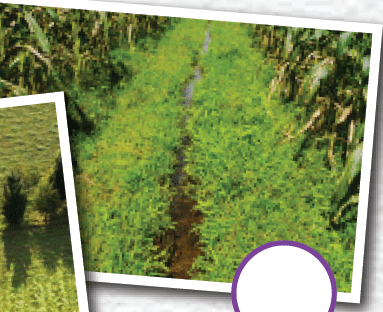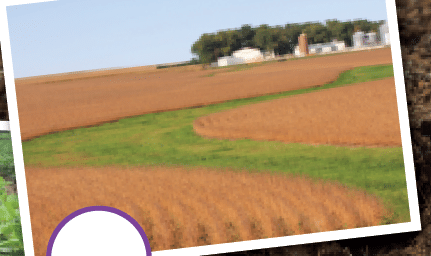Why Ag in the Classroom?
Agriculture means survival. Over time, fewer and fewer people have close contact with farming and the total agricultural sector. They’re not aware of their own and society’s total dependence on agriculture. People must be agriculturally literate in order to make responsible decisions affecting this giant lifeline.
Teaching students to be agriculturally literate brings their learning to life. Helping students understand the farm-to-table connection is important in our consumer-driven society. That’s what the student Minnesota AgMag Series is all about.
About Your AgMag
The AgMag is a great supplement to your social studies, science, or language arts curriculum. The AgMag has particular appeal to the study of Minnesota history and geography. You’ll get three issues per school year: October, January, and March.
AgMag Theme: Caring for our Natural Resources
- Overview of Minnesota’s natural resources and how agriculture depends on those natural resources.
- Celebrating our ratural resources
- Wonderful Water; The Water Cycle
- Caring for our water
- Digging deep into soil
- Meet the farmer
- Homegrown energy; Cause & Effect
- Crop Power! Renewable & nonrenewable resources
- Making a bioplastic
Integration Ideas
English Language Arts
- Ask students to identify key ideas and details and build their vocabulary through the AgMag’s informational text.
- Use agriculture as an inspiration for creative writing activities and group discussions. Ideas: Stories from the points of view of plants or animals that depend on humans; predictions for agriculture in 2050 (or future years); letters to children in other countries with descriptions about agriculture here and questions about agriculture there.
Science and Math
- Have the students create a bioplastic (page 8) as an extension activity after learning about renewable and non-renewable resources.
- Take a hike! Go on an outdoor excursion and try and find signs of erosion, observe what caused the erosion, and come up with a plan to find out ways to stop the erosion from occurring in the identified area.
- When studying evaporation, refer to pages 2-3. Have students pour a cup of water outside on the sidewalk on a warm day and take field notes to observe what occurs. Discuss what part of the water cycle they are witnessing, and what happens next in the water cycle.
Glossary
Some words in your AgMag may be unfamiliar to your students. Many are defined in the articles. There is also a glossary on the AgMag website: https://mnagmag.org/glossary/ Words you might wish to pre-teach are:
AGRICULTURE: Growing plants and raising animals that people use for food, clothing and many other things every day. It’s also harvesting those farm products and getting them to us so we can use them. Agriculture is the industry that grows, harvests, processes, and brings us food, fiber, fish, forests, sod, landscaping materials, and more. It uses soil, water, sun, and air to produce its products. The process starts on farms, orchards, gardens, and ranches with the growing and the harvesting of crops and livestock, then moves to processing plants before finally traveling as finished products to stores, farm markets, lumberyards, greenhouses, and more where consumers buy the products. Agriculture is connected in some way with almost everything we eat, wear, and use.
Quote from an Unknown Source: “Agriculture is not simply farming. It’s the supermarket, the equipment factory, the trucking system, the overseas shipping industry, the scientist’s laboratory, the houses we live in, and much more. It has an effect on the air we breathe, the ground we walk on, the water we drink, and the food we eat.”
STEWARD: someone who is in charge of supervising or taking care of something, such as an organization or property.
EVAPORATION:the process of turning from liquid into vapor.
CONDENSATION:the conversion of a vapor or gas to a liquid.
PRECIPITATION:rain, snow, sleet, or hail that falls to the ground.
WATER CYCLE: The cycle of processes by which water circulates between the earth’s oceans, atmosphere, and land, involving precipitation as rain and snow, drainage in streams and rivers, and return to the atmosphere by evaporation and condensation.
SUBLIMATION:When anything solid turns into a gas without first becoming liquid,
EROSION: The geological process in which earthen materials are worn away and transported by natural forces such as wind or water
NATURAL RESOURCE: A resource which comes from the natural environment such as water, soil, wind, solar energy, etc.
RENEWABLE RESOURCE A resource :that can be used repeatedly and does not run out because it is naturally replaced
NONRENEWABLE RESOURCE: A natural substance that is not replenished with the speed at which it is consumed. Ex: fossil fuels or petroleum.
Minnesota Academic Standards Connection
| Subject | Standard Code | Benchmark |
| Science | 4E.1.1.1.2 | Ask questions about how water moves through the Earth system and identify the type of question. (P: 1, CC: 5, CI: ESS2) Emphasis is on the processes of evaporation, condensation, and precipitation. Examples of types of questions may include those that can be tested by an experiment, and questions that may be answered from a text. |
| Science | 4E.1.2.1.2 | Plan and carry out fair tests in which variables are controlled and failure points are considered to improve a model or prototype to prevent erosion.* (P: 3, CC: 2, CI: ESS2, ETS1; ETS2) Examples of prototypes to prevent erosion include retaining walls, wind breaks, use of shrubs or other vegetation, and drainage systems |
| Science | 4E.4.2.1.1 | Read and comprehend grade appropriate complex texts and/or other reliable media to describe that energy and fuels are derived from natural resources and their uses affect the environment. (P: 8, CC: 2, CI: ESS3, ETS2) Examples of information about natural resources should include details about those found in Minnesota. Examples of renewable energy resources may include wind, water behind dams, and sunlight; non-renewable energy resources include fossil fuels and fissile materials. Examples of environmental effects may include loss of habitat due to dams, loss of habitat due to surface mining, and air pollution and global warming from burning fossil fuels. |
AgMag Cover (Social Studies): Caring For Our Natural Resources
Discussion Questions
- What are some examples of natural resources?
- What does it mean to be a good steward? Why is it important that we be good stewards of the land?
Engagement Activity: What are Natural Resources?
- Bring to class a box of dirt, a bottle of water, a fan (turned on), and ask you students to touch, feel, and look at these 3 items. After the class has had a chance to observe the items, ask them what all three of these items have in common.
- Explain to your students that the items you’ve displayed are examples of natural resources (the fan is not a natural resource, but is mimicking the resource of wind) Explain that natural resources are resources that come from the natural environment such as water, soil, wind, solar energy, etc. Come up together with a list of as many natural resources as you can.
- After you’ve come up with a list of natural resources, follow up with these discussion questions:
- What would we do if we ran out of one of those natural resources?
- How can we take care of our natural resources?
Page 2-3: Celebrating our Natural Resources
Discussion Questions
- Where does our water come from?
- Why is soil important?
- How can we keep our air fresh?
Water Cycle Activity: Up Close Examples of the Water Cycle
Evaporation: If the weather is warm, take your class outside and pour a small amount of water on the sidewalk. Observe how the water begins to dry up. Explain that the water isn’t disappearing, but turning from a liquid into a gas (water vapor). Another example of water vapor is when boiling water in a pot, the steam rising up from the pot is an example of water vapor.
Precipitation: Minnesota has more precipitation than many parts of the country. When it rains or snows, take the time to point out the precipitation to your class.
Condensation: Condensation occurs in more places than we think! In the morning dew on the grass, fogging up a mirror or window, visible breath in cold conditions, clouds in the sky.
Water Vapor: When water is heated to a high enough temperature, the liquid water forms a gas, which is also known as water vapor.
Water Cycle Companion Resources
- For a fun, musical explanation of the water cycle (that you’re sure to have stuck in your head) show your students this video: https://www.youtube.com/watch?v=TWb4KlM2vts&ab_channel=HaveFunTeaching
- Another option of an engaging video that explains the water cycle: https://www.youtube.com/watch?v=ncORPosDrjI&ab_channel=PeekabooKidz
Wonderful Water
The Minnesota Agricultural Water Quality Certification Program (MAWQCP) is a voluntary certification that farmers and agricultural landowners can participate in to protect and conserve our water. To learn more about this program, visit https://www.mda.state.mn.us/environment-sustainability/minnesota-agricultural-water-quality-certification-program
Post reading discussion:
- Why does the LaSalle Family not want the cow manure to get into the lakes and streams?
- What are some ways you can protect and take care of water?
Page 4: Digging Deep into the Sil
Discussion Questions:
- Why do we need soil? What does soil do? Healthy soil is needed for plants to be able to grow and thrive.
- Did you know dirt and soil are two different things? How are they different? Soil contains organic matter, microbes, fungi, all of which are important for plant growth. Whereas dirt essentially lacks those microbes and organic matter.
- Why should we work to protect soil from erosion? Soil is a valuable natural resource that nourishes and supports plant growth among many other things.
Holding Onto The Soil
Answers:
- Windbreak –

- No Tillage –

- Cover Crop –

- Grassed Waterways –

Page 5: Meet The Farmer
Dave and Petra Wise live in Sawyer, MN and run their farm and business on the Fond Du Lac reservation. To learn more about them, https://nativewisellc.net/about/
Page 6-7: Homegrown Energy & Crop Power
Discussion Questions
- What types of energy can you think of?
- Look around the room. Where is energy being used right now?
- What uses fuel? (cars, lawn mower, motorcycle, tractors, etc.). What happens if that machine runs out of fuel?
- Have you ever wondered where fuel comes from? Why is it important to have fuel that is renewable?
For an engaging explanation on renewable and non-renewable energy, watch this video: https://www.generationgenius.com/videolessons/renewable-vs-nonrenewable-energy-for-kids/
Cause & Effect Activity:
Cause: Corn from the Guentzel farm is made into ethanol.
Effects:
- Fuel and energy is created using less fossil fuels. This has a positive impact on the environment because nonrenewable resources are not depleted.
- Ethanol is a cleaner burning fuel than gasoline, so the environment also benefits from having less air pollution from the burning of fossil fuels.
- Gentzel family makes a profit by selling their corn to Guardian Energy to make ethanol
Cause: A pilot fuels her plane with sustainable aviation fuel.
Effects:
- Less fossil fuels are used because the sustainable aviation fuel is made using ethanol from corn.
- The pilot must purchase the sustainable aviation fuel, so this allows companies creating this fuel to earn a profit and continue producing sustainable fuel from renewable resources (not fossil fuels: nonrenewable resources)
If you’d like to try this activity in reverse, here’s a list of “effect” prompts. Discuss with your students what a possible “cause”was that led to the “effect”
- Effect: A shopper brings their own reusable grocery bags to the store instead of using plastic ones (cause would be a store decides not to provide and purchase plastic bags as a way to reduce their use of plastics)
- Effect: less fossil fuels are used to produce the fuel for the motorcycle (cause would be a rider fuels their motorcycle with fuel containing ethanol)
Page 8: Making Bioplastic!
Materials needed:
- Resealable plastic sandwich size bag
- Cornstarch
- Corn Oil
- Water
- Food Coloring
Discussion Questions
- What are examples of things made of plastic? Grocery bags, food containers, water bottles
- Look around the room. What can you see that is made of plastic? (perhaps the chairs, wall displays, water bottles, etc. This will vary depending on your room)
- What advantages are there to using renewable resources from corn to make plastic? You are using something that can easily be replaced. Renewable resources cost less and are often less harmful to the environment when used/processed

